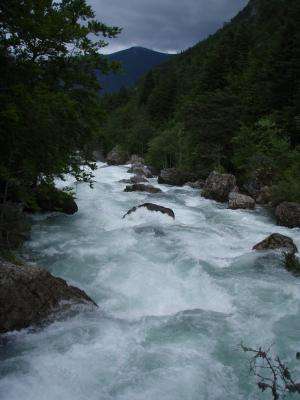Study finds rivers and streams release more greenhouse gas than all lakes

Rivers and streams release carbon dioxide at a rate five times greater than the world's lakes and reservoirs combined, contrary to common belief.
Research from the University of Waterloo was a key component of the international study, the findings of which appear in a recent issue of the journal Nature.
"Identifying the sources and amounts of carbon dioxide released from continental water sources has been a gap in understanding the carbon cycle. Our findings show just how much carbon dioxide inland waters release and identified that rivers and streams are the main source not lakes and reservoirs, as previously thought," said Professor Hans Dürr, research professor from the Faculty of Science at Waterloo.
A team of scientists from Belgium, Canada, Finland, France, Germany and the United States found that the rate at which lakes and reservoirs release carbon dioxide, or evasion rate, was lower than previous estimates. The rate from rivers and streams was three times higher, and even greater in smaller, fast-moving streams. The researchers found that the global carbon dioxide evasion rate from rivers and streams was 1.8 billion tons of carbon per year, compared with the 0.32 billion tons from lakes and reservoirs.
Professor Dürr, a co-author of the study, is a member of the Ecohydrology Research Group and Water Institute at Waterloo. His modelling tool called Coastal Segmentation and related Catchments, or COSCAT, was critical to putting the data into the global context.
"This study is an example of how new knowledge can be gained by bringing together different tools, techniques and ideas from hundreds of scientists to tackle a global issue," said Professor Dürr. "More integrated, international collaborations like this are needed."
The model is a global database of water bodies, or catchments, that connect to oceans. This land–ocean water connection is important for the movement of nutrients, greenhouse gases and metals in water systems.
This study provides new insights into how rivers and streams affect the global carbon cycle but emphasizes that additional research is needed to determine the carbon dioxide evasion rate for inland waters in the northern hemisphere.
Better estimates of carbon dioxide emissions are crucial because climate models project higher temperature increases than the global average in latitudes higher than 60 degrees north, yet many of the tools are derived from satellite products that do not yet exist for these latitudes.
Journal information: Nature
Provided by University of Waterloo

















